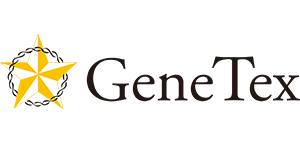HLA-ABC antibody (W6/32) (FITC)
HLA-ABC antibody (W6/32) (FITC)
SKU
GTX04980-06-100
Packaging Unit
100 μg
Manufacturer
GeneTex
Availability:
loading...
Price is loading...
Clone Name: W6/32
Application Note: FACS: Neat. *Optimal dilutions/concentrations should be determined by the researcher.Not tested in other applications.
Calculated MW: 41
Specificity/Sensitivity: We do not recommend use of this product for Amphibians,Chicken,Dog,Goat,Guinea pig,Mouse,Rabbit.
Form: Liquid
Buffer (with preservative): PBS,1% BSA, 0.09% Sodium azide.
Concentration: 0.1 mg/ml (Please refer to the vial label for the specific concentration.)
Background: HLA-A belongs to the HLA class I heavy chain paralogues. This class I molecule is a heterodimer consisting of a heavy chain and a light chain (beta-2 microglobulin). The heavy chain is anchored in the membrane. Class I molecules play a central role in the immune system by presenting peptides derived from the endoplasmic reticulum lumen. They are expressed in nearly all cells. The heavy chain is approximately 45 kDa and its gene contains 8 exons. Exon 1 encodes the leader peptide, exons 2 and 3 encode the alpha1 and alpha2 domains, which both bind the peptide, exon 4 encodes the alpha3 domain, exon 5 encodes the transmembrane region, and exons 6 and 7 encode the cytoplasmic tail. Polymorphisms within exon 2 and exon 3 are responsible for the peptide binding specificity of each class one molecule. Typing for these polymorphisms is routinely done for bone marrow and kidney transplantation. Hundreds of HLA-A alleles have been described. [provided by RefSeq, Jul 2008]/HLA-B belongs to the HLA class I heavy chain paralogues. This class I molecule is a heterodimer consisting of a heavy chain and a light chain (beta-2 microglobulin). The heavy chain is anchored in the membrane. Class I molecules play a central role in the immune system by presenting peptides derived from the endoplasmic reticulum lumen. They are expressed in nearly all cells. The heavy chain is approximately 45 kDa and its gene contains 8 exons. Exon 1 encodes the leader peptide, exon 2 and 3 encode the alpha1 and alpha2 domains, which both bind the peptide, exon 4 encodes the alpha3 domain, exon 5 encodes the transmembrane region and exons 6 and 7 encode the cytoplasmic tail. Polymorphisms within exon 2 and exon 3 are responsible for the peptide binding specificity of each class one molecule. Typing for these polymorphisms is routinely done for bone marrow and kidney transplantation. Hundreds of HLA-B alleles have been described. [provided by RefSeq, Jul 2008]/HLA-C belongs to the HLA class I heavy chain paralogues. This class I molecule is a heterodimer consisting of a heavy chain and a light chain (beta-2 microglobulin). The heavy chain is anchored in the membrane. Class I molecules play a central role in the immune system by presenting peptides derived from endoplasmic reticulum lumen. They are expressed in nearly all cells. The heavy chain is approximately 45 kDa and its gene contains 8 exons. Exon one encodes the leader peptide, exons 2 and 3 encode the alpha1 and alpha2 domain, which both bind the peptide, exon 4 encodes the alpha3 domain, exon 5 encodes the transmembrane region, and exons 6 and 7 encode the cytoplasmic tail. Polymorphisms within exon 2 and exon 3 are responsible for the peptide binding specificity of each class one molecule. Typing for these polymorphisms is routinely done for bone marrow and kidney transplantation. Over one hundred HLA-C alleles have been described [provided by RefSeq, Jul 2008]
Uniprot ID: P01892/P04439/P30443/P30450/P01889/P30466/P10321
Antigen Species: Human
Immunogen: Purified human tonsil lymphocyte membranes.
Purification: Purified by protein G followed by antigen-affinity chromatography.
Conjugation: FITC
Full Name: major histocompatibility complex, class I, A/major histocompatibility complex, class I, B/major histocompatibility complex, class I, C
Application Note: FACS: Neat. *Optimal dilutions/concentrations should be determined by the researcher.Not tested in other applications.
Calculated MW: 41
Specificity/Sensitivity: We do not recommend use of this product for Amphibians,Chicken,Dog,Goat,Guinea pig,Mouse,Rabbit.
Form: Liquid
Buffer (with preservative): PBS,1% BSA, 0.09% Sodium azide.
Concentration: 0.1 mg/ml (Please refer to the vial label for the specific concentration.)
Background: HLA-A belongs to the HLA class I heavy chain paralogues. This class I molecule is a heterodimer consisting of a heavy chain and a light chain (beta-2 microglobulin). The heavy chain is anchored in the membrane. Class I molecules play a central role in the immune system by presenting peptides derived from the endoplasmic reticulum lumen. They are expressed in nearly all cells. The heavy chain is approximately 45 kDa and its gene contains 8 exons. Exon 1 encodes the leader peptide, exons 2 and 3 encode the alpha1 and alpha2 domains, which both bind the peptide, exon 4 encodes the alpha3 domain, exon 5 encodes the transmembrane region, and exons 6 and 7 encode the cytoplasmic tail. Polymorphisms within exon 2 and exon 3 are responsible for the peptide binding specificity of each class one molecule. Typing for these polymorphisms is routinely done for bone marrow and kidney transplantation. Hundreds of HLA-A alleles have been described. [provided by RefSeq, Jul 2008]/HLA-B belongs to the HLA class I heavy chain paralogues. This class I molecule is a heterodimer consisting of a heavy chain and a light chain (beta-2 microglobulin). The heavy chain is anchored in the membrane. Class I molecules play a central role in the immune system by presenting peptides derived from the endoplasmic reticulum lumen. They are expressed in nearly all cells. The heavy chain is approximately 45 kDa and its gene contains 8 exons. Exon 1 encodes the leader peptide, exon 2 and 3 encode the alpha1 and alpha2 domains, which both bind the peptide, exon 4 encodes the alpha3 domain, exon 5 encodes the transmembrane region and exons 6 and 7 encode the cytoplasmic tail. Polymorphisms within exon 2 and exon 3 are responsible for the peptide binding specificity of each class one molecule. Typing for these polymorphisms is routinely done for bone marrow and kidney transplantation. Hundreds of HLA-B alleles have been described. [provided by RefSeq, Jul 2008]/HLA-C belongs to the HLA class I heavy chain paralogues. This class I molecule is a heterodimer consisting of a heavy chain and a light chain (beta-2 microglobulin). The heavy chain is anchored in the membrane. Class I molecules play a central role in the immune system by presenting peptides derived from endoplasmic reticulum lumen. They are expressed in nearly all cells. The heavy chain is approximately 45 kDa and its gene contains 8 exons. Exon one encodes the leader peptide, exons 2 and 3 encode the alpha1 and alpha2 domain, which both bind the peptide, exon 4 encodes the alpha3 domain, exon 5 encodes the transmembrane region, and exons 6 and 7 encode the cytoplasmic tail. Polymorphisms within exon 2 and exon 3 are responsible for the peptide binding specificity of each class one molecule. Typing for these polymorphisms is routinely done for bone marrow and kidney transplantation. Over one hundred HLA-C alleles have been described [provided by RefSeq, Jul 2008]
Uniprot ID: P01892/P04439/P30443/P30450/P01889/P30466/P10321
Antigen Species: Human
Immunogen: Purified human tonsil lymphocyte membranes.
Purification: Purified by protein G followed by antigen-affinity chromatography.
Conjugation: FITC
Full Name: major histocompatibility complex, class I, A/major histocompatibility complex, class I, B/major histocompatibility complex, class I, C
| SKU | GTX04980-06-100 |
|---|---|
| Manufacturer | GeneTex |
| Manufacturer SKU | GTX04980-06-100 |
| Package Unit | 100 μg |
| Quantity Unit | STK |
| Reactivity | Human |
| Clonality | Monoclonal |
| Application | Flow Cytometry |
| Isotype | IgG2a |
| Human Gene ID | 3105/3106/3107 |
| Host | Mouse |
| Conjugate | Conjugated, FITC |
| Product information (PDF) | Download |
| MSDS (PDF) |
|

 Deutsch
Deutsch







